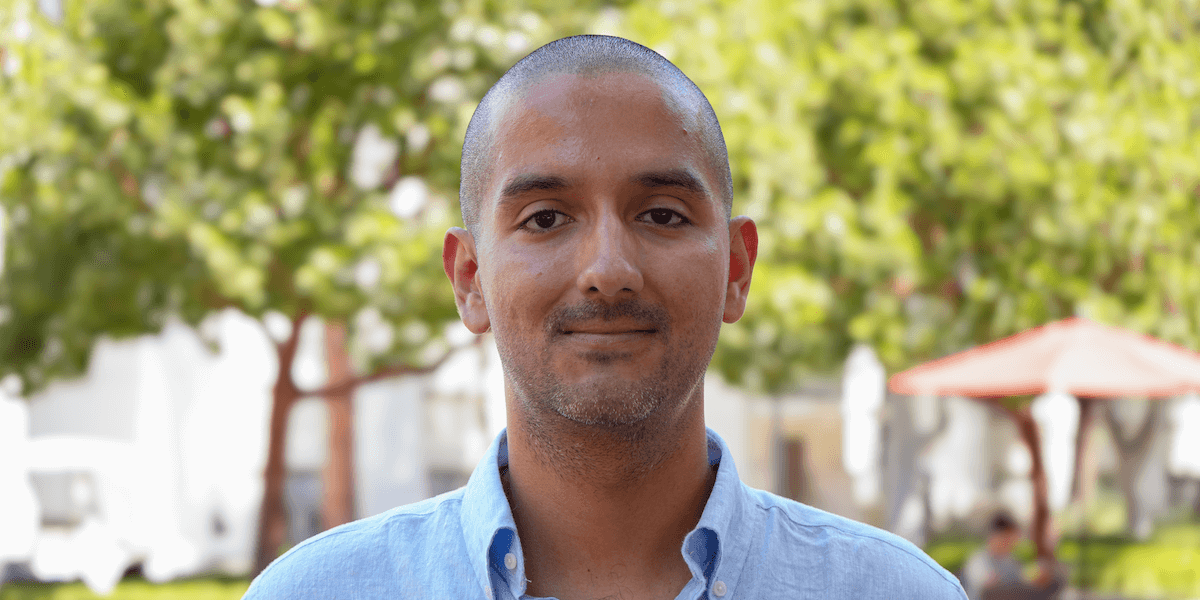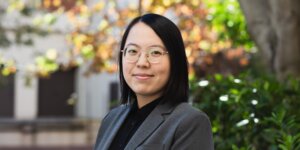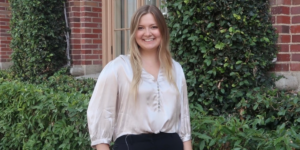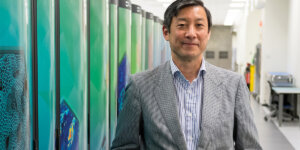
Associate professor of industrial and systems engineering Camilo Hernandez. Image/Dani Orlando
Camilo Hernández is interested in how we can improve our decision-making in random or unpredictable situations, such as in the financial markets.
This fall he joins USC Viterbi School of Engineering as an associate professor of industrial and systems engineering, bringing a wealth of experience in optimal stochastic control theory with applications in financial mathematics, contract theory, and behavioral economics.
Hernández completed his Ph.D. in Operations Research from Columbia University in 2021, before moving to Imperial College London as a Chapman Fellow of Mathematics. He comes to the department from Princeton University, where he was a Presidential Fellow in the Operations Research and Financial Engineering Department. We spoke to Hernández about his background, research interests, and what he hopes to bring to USC’s academic community.
Your research focuses on stochastic control and its applications in financial engineering. Could you explain in simple terms what this means and how it applies to real-world financial problems?
Optimal stochastic control studies the optimal decision-making over a given time period in the presence of randomness/uncertainty. One field of finance in which I have applied my expertise in optimal control is contract theory. This is an example of a bi-level stochastic control problem. Imagine the board of a company (the principal) looking to hire a new CEO (the Agent) to run the company. Alternatively, think of a government looking to design a policy that fosters investment in the financial markets in a particular sector of the economy, such as renewable sources. In this framework, the goal of the principal is to design the best contract, compatible with the agent’s preferences, that maximizes her utility while that of the agent is held to a given level. The crux of the problem is to design a mechanisms that aligns the preferences of the Agent with that of the Principal, this is, the Agent(s) are provided with sufficient incentives to behave in a way that is beneficial to the principal.
I have paid close attention to the case of the so-called time-inconsistent agents. For these individuals, plans that are optimal today are no longer optimal if revised in the future. For example, imagine an individual can choose between working or napping each day. A time-inconsistent individual will find it better to nap today and defer working for tomorrow. However, when tomorrow comes, the individual defers working for the next day and then again, the day after. In the end, they might end up never working. This behavior exemplifies procrastination but is also found in how some individuals administer their credit cards.
You’ve had experience at several prestigious institutions, including Princeton, Imperial College London, and Columbia University. How do you think these experiences will shape your approach to research and teaching at USC?
My experience in previous positions as a student and researcher has greatly shaped my approach to academic research and teaching. Institutions like USC push you to pursue excellence. In terms of teaching, I am particularly excited about helping USC students discover the different ways probability serves as a strong modeling tool in engineering and finance and supporting the next generations of researchers in reaching their potential. Regarding research, my work aims to develop mathematical methodologies to study novel real-world situations in society or technology. This typically leads to projects at the intersection of mathematics and other fields, such as economics or statistics. At USC, I am particularly eager to engage in discussions and collaborate on projects with faculty across the university.
What current projects or research areas are you most excited about?
I am excited about my work on the mean-field version of the Schrödinger problem and its applications to statistics. In the abstract version of this problem, one looks for the best way to steer a large cloud of interacting particles from an initial configuration to a pre-specified target configuration. What I find interesting about this problem is that if the particles’ starting points are understood as samples from an unknown distribution, the above framework corresponds to that of celebrated diffusion models, which are state-of-the-art generative models for certain tasks such as image generation. This is a highly active field of research, but there is still a lot to say from a methodological standpoint.
What aspects of your research do you find most rewarding or fascinating?
I particularly enjoy its interdisciplinary aspect. I enjoy the process of modeling a concrete application and developing good mathematical tools for its analysis. Since applications might range across a wide spectrum, such as economics, finance, and statistics, I take pleasure in diving into the literature of a field I am not yet familiar with.
How do you think your background in economics and mathematics contributes to your approach to industrial and systems engineering?
Both mathematics and economics are ubiquitous to industrial and systems engineering as this field cuts across many aspects of modern-day society. Think of the number of transactions in the financial sector or the flourishing of new economies, such as e-commerce, online marketplaces, and online advertisement. These activities are characterized by a greater number of agents from both the supply and demand sides and an unprecedentedly large menu of tailor-made and personalized services. This leads to more intricate behaviors and interactions at all levels of the economy. Consequently, there is a pressing need to create economic and mathematical frameworks that can explain the participants’ rationale, how their actions are aggregated in society, and which are compatible with documented evidence.
What excites you most about joining the faculty at USC Viterbi?
The Viterbi School is remarkable because of the breadth and depth of the research that is covered across its different departments. I believe the record of the research that is produced at USC, together with the well-established momentum to grow departments like ISE, make it an ideal place to work, in my opinion. Take the recently established USC – Capital One Center for Responsible AI and Decision Making in Finance (CREDIF), the first center launched under the USC School of Advanced Computing (SAC). This center will help foster the advancement of foundational results for artificial intelligence and its applications to solving complex financial problems. Initiatives like this, on which I will serve on its advisory board this year, echo USC Viterbi’s leadership and commitment to advancing innovation and productivity in the sciences.
Are there any courses you’re particularly looking forward to teaching at USC?
Given my keen interest in probability, mathematical finance, and control theory, I look forward to teaching in the different programs that are hosted by the ISE department or, more broadly, the Viterbi School of Engineering. From the undergraduate program in industrial and systems engineering to the M.S. in analytics and the MS in financial engineering. This fall, I will teach Foundations of Stochastic Modeling, ISE 220, a course that establishes the building blocks of probability theory and familiarizes the students with many probabilistic models and their applications. In addition, I look forward to offering topics courses on stochastic control, contract theory and their applications to financial engineering, which are part of my research agenda. I believe these topics could be particularly interesting to graduate students at the Ph.D. or Master’s level who are passionate about stochastic processes and their applications.
You’ve had experience supervising both undergraduate and graduate students. What’s your philosophy on mentoring students and involving them in research?
Mentoring is a student-oriented process; it is much more than just information transfer. My personal approach revolves around mentoring to develop critical thinking and keeping an approachable disposition. I have found that following this practice, students get both excited and involved in the research process, develop a curious attitude toward knowledge, and realize the questions that remain unanswered. Consequently, it is crucial that students are willing to ask further about these questions. In research, creating spaces for discussion and debate is indispensable. Ultimately, my role as a mentor is to nurture the next generation of researchers and help them reach their best version.
Given your international experience and collaborations, how do you plan to foster global connections and partnerships in your new role at USC?
The mathematical finance community is quite vibrant and well-connected. I am proud to be part of an institution that recognizes the importance of fostering these collaborations as part of the process of developing novel research. By complementing the pool of speakers in departmental seminars or hosting events on campus, I aim to enrich the discussions on campus and complement the high-quality research developed on campus.
Published on October 2nd, 2024
Last updated on October 2nd, 2024













